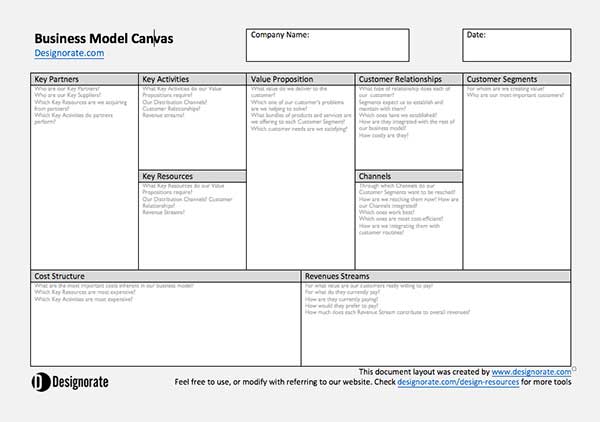
By doing so, you will have already defined what the main activities and resources are so that your business can deliver value to the customer. Cost Structure: it is interesting to let this as the last block of the Business Model Canvas to be completed.Key Partners: inform in this block who your business partners are, observing the motivation of each one, whether they are suppliers, service providers, outsourced companies, among others.They can be development and maintenance of technologies, production line, logistics and distribution etc. Indicate here all the essential activities for your business to work out and deliver value to the customer.


Then, you must also include the necessary resources to keep your channels and relationship strategies working. Key Resources: to fill this block, you first need to ask yourself “What resources are essential for my business to be able to deliver value to the customer?”.For example, sales, subscription, licensing, etc. You can have more than one revenue stream also, and it is important that all of them are included here. Revenue Streams: “How and how much will my customer pay for the value proposition I will be delivering?” This block outlines how your business will make money.Customer Relationships: the purpose of this block is to bring together all the service, communication and after-sales strategies that your business will use to create a relationship with the customer, in order to guarantee the retention of your audience, preventing them from migrating to the competition.List, in this block, all the ways through which your business can deliver value to your customer, whether sales channels, distribution or even communication and marketing. Channels: the question here is “What are the best ways for me to reach my customer?”.Ask yourself “What value do I deliver to my consumer?” Basically, try to highlight what differentiates your product or service from the competition. Value Propositions: having defined who your audience is, in the first block, you must now think about what needs of those people your product can meet.Try to answer as briefly as possible to the question: “Who is my primary customer?” or “What kind of customer can I generate value for”? That’s because it’s easier to design your business when you already know who you’re selling to. Customer Segments: you should start filling out your Business Model Canvas here.

This blank canvas is divided graphically into nine building blocks, which must be filled in as follows: It is user-friendly and different from everything that had been previously proposed, because it dispenses pages and pages of explanations and, on the other hand, focuses the attention of interested parties on a single canvas. This tool was developed by Alexander Osterwalder, in his book entitled Business Model Generation. The Business Model Canvas Template PPT is likely to be the most well-known and used business modelling system in the world.


 0 kommentar(er)
0 kommentar(er)
